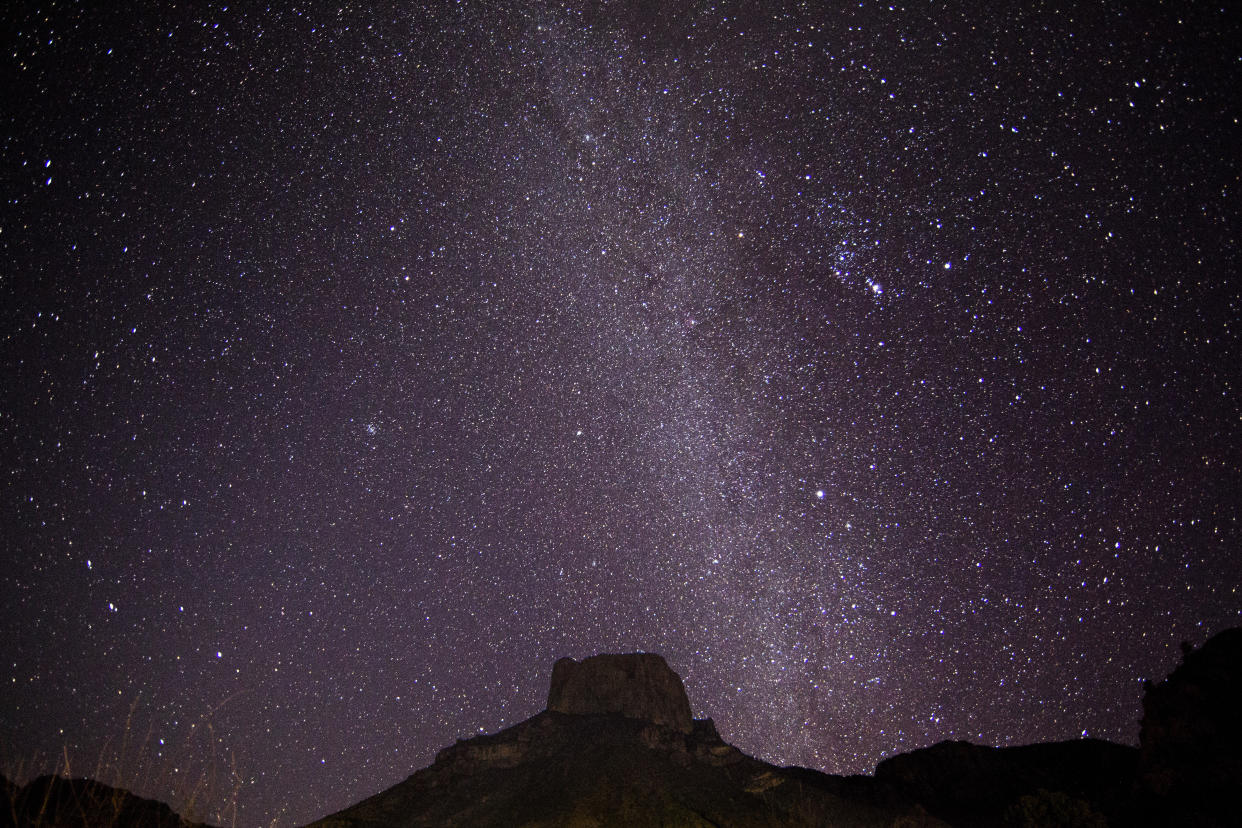The stars align at these 6 dark-sky reserves

If you're looking for the light, go toward a Dark Sky Place. Away from the artificial light pollution that plagues big cities and suburbs, these areas offer the right conditions for clear stargazing, astrophotography, moonlight walking tours and other dark-sky activities.
The International Dark Sky Association (IDA) certifies parks, communities and reserves that use "responsible lighting policies and public education" to "preserve and protect dark sites." Globally, there are more than 200 International Dark Sky Places across 22 countries, some well off the beaten path and others just a short trek from urban centers. These six dark-sky spots promise a celestial experience.
Big Bend National Park in Texas
It's easy to get lost in the cosmos at Big Bend National Park. Because the park is situated deep in Texas, away from large cities and towns, the skies above Big Bend are some of the darkest in the lower 48 states. If you're camping here, you can stargaze on your own (bring binoculars, a telescope and lawn chairs) or take part in one of the free night-sky programs offered by the park. These are led by rangers and volunteers and include guided hikes during a full moon and telescope viewing. Keep an eye out for animals that avoid the day's heat by appearing at night, and use the stars and moon for navigation.
NamibRand Nature Reserve in Namibia
The mission of the private NamibRand Nature Reserve is twofold: to protect and conserve the ecology and wildlife of the southwestern Namib Desert and preserve the starry night sky. One way NamibRand does this is by limiting the brightness of outdoor light fixtures and vehicle headlights. For an especially comfortable dark-sky experience, stay at the intimate Kwessi Dunes safari camp, where the 12 air-conditioned accommodations all come with a "stargazer room" that is completely open to the outside, ensuring prime star-watching as you fall asleep.
Wairarapa Dark Sky Reserve in New Zealand
The Wairarapa Dark Sky Reserve comes alive once the sun sets and the stars begin to glow. Stretching across 1,415 square miles, there is a lot of space to stargaze, and the intrepid should consider biking into the Aorangi Forest Park for an even more secluded experience. The reserve is only an hour from Wellington and home to 21,000 people, but the communities have lowered their public lighting in order to protect the dark sky.
Regional Natural Park of Millevaches in Limousin in France
This 1,293-square-mile reserve, with its meadows, peat bogs, moors, rivers and forests that are home to butterflies, otters and birds, looks like a location out of a fairy tale. About 38,950 people live inside the reserve's borders, but their presence doesn't interfere with the sky at night. "Indeed, the Milky Way can be observed with the naked eye throughout the reserve, even in the most populous municipalities such as Meymac," the IDA said, and visitors are "always delighted to see how visible the stars are in the region."
Moore's Reserve at South Downs National Park in England
Yes, you can see a dark sky within 60 miles of London. It is "remarkable that any relatively dark areas remain between London and the south coast of England," the IDA said, and the park's goal is to keep it this way. One way of educating the public on how they can help is through events like the annual South Downs Dark Skies Festival, running Feb. 10-18, 2024. There's stargazing, star parties, nocturnal wildlife encounters and the Walk the Planets trail, which features the planets laid out to scale.
Merritt Reservoir State Recreation Area in Nebraska
The Merritt Reservoir State Recreation Area fully embraces its designation as a dark-sky destination. Every year, novice and seasoned astronomers come to the park for a Star Party that's out of this world. It's educational and entertaining, with special activities for kids so they can learn about celestial mechanics and make their own spectroscopes and telescopes. For 2024, the Nebraska Star Party, now in its 31st year, is set for July 28-Aug. 2.

